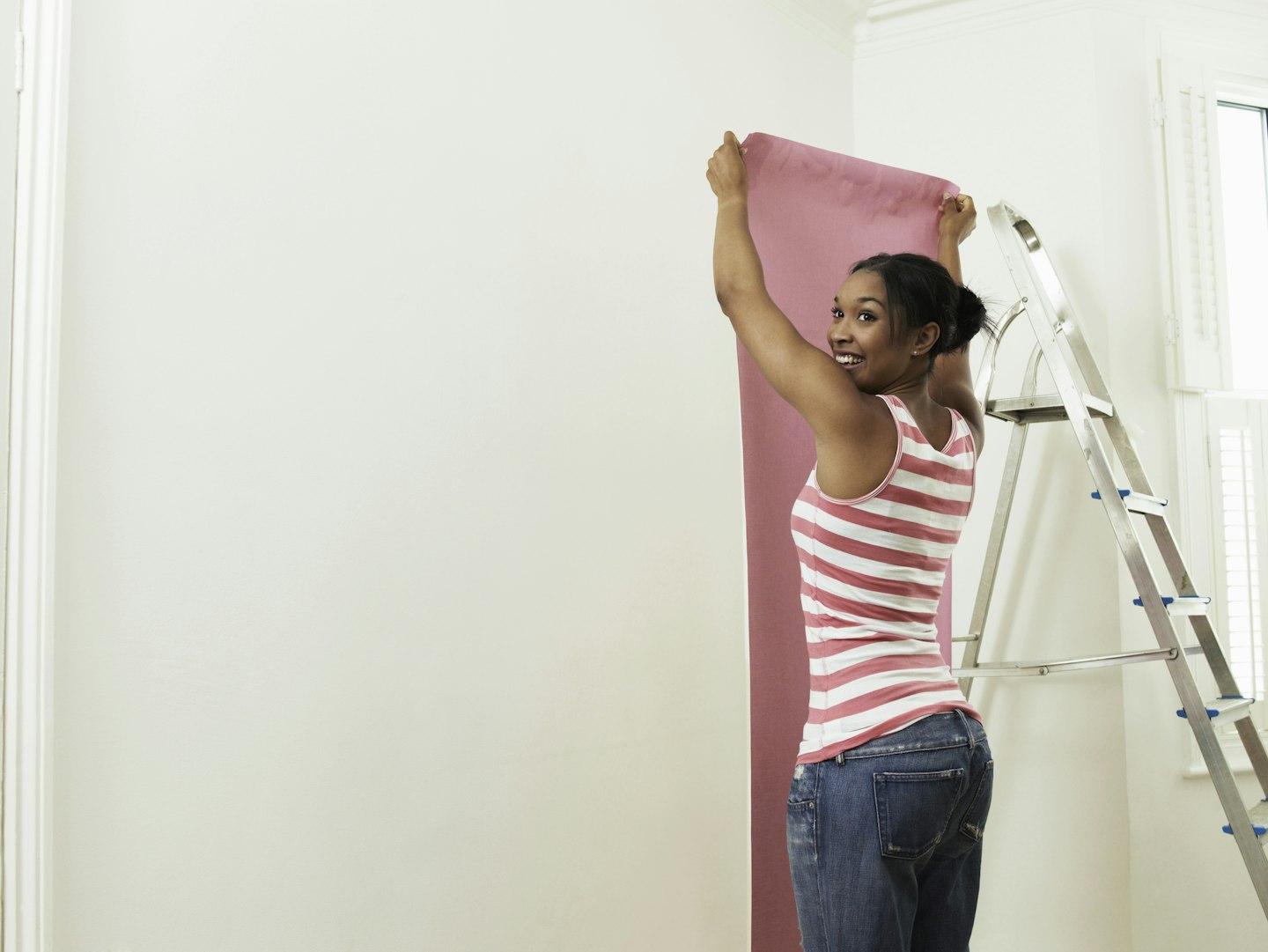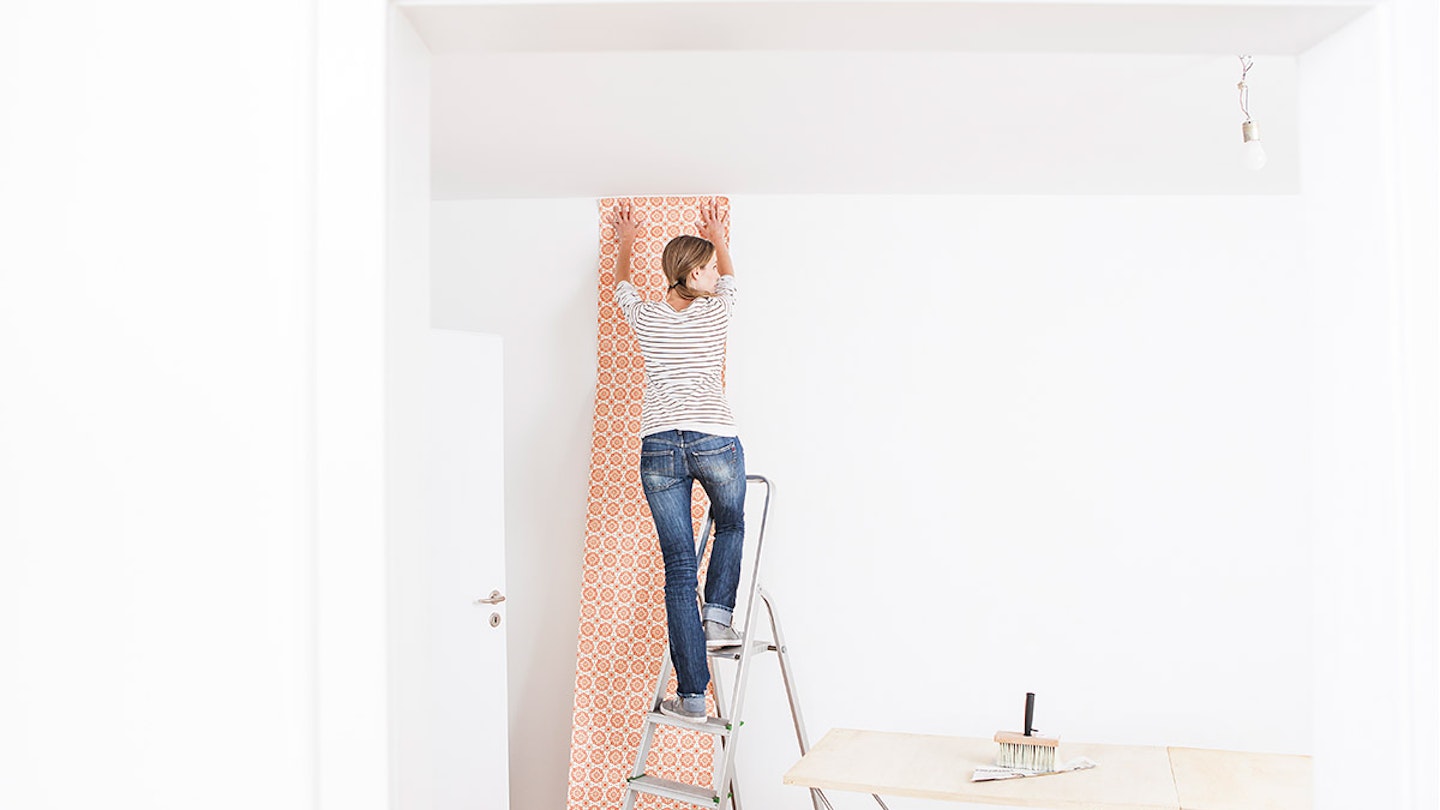Wallpapering is a great way to inject a little personality to tired looking rooms if you don’t fancy painting. With so many different wallpapers available, from plain, to patterned, textured and even themed from your favourite movies, there’s plenty of options to choose from.
If you’re a complete newbie to wallpapering, then you’re going to want to make sure you know exactly what you’re doing beforehand. Luckily, B&Q have shared some handy tips on how to wallpaper to avoid any mess ups.
Before you begin...
Before you learn how to wallpaper, there are a few tasks you need to do beforehand. If not, then this could affect the overall finish.
Remove all existing wallpaper - don’t be lazy and try and wallpaper over existing wallpaper. Remove it, as this will ensure you get a smooth finish and prevent any air bubbles or creases appearing once you’ve applied your new wallpaper.
Apply sealant to freshly plastered walls - this is really important, as it seals the porous surface of the wall and improves the adhesion of the wallpaper paste.
Hang lining paper - this will stop your new wallpaper from shrinking once it’s hung. It’s also handy for disguising any small imperfections or stains on the wall.
Make sure you’ve got enough wallpaper - while this seems obvious, it’s a very common mistake to be made. Use B&Q’swallpaper calculator to make sure you buy the right amount for your project.
Consider how you’ll hang your wallpaper - unless the pattern of your wallpaper requires it to be hung horizontally, B&Q recommends hanging wallpaper vertically. If you’ve lined the walls with hanging paper, hang your wallpaper in the opposite direction.
Tools you will need
• Wallpaper
• Wallpaper paste
• Pasting brush
• Snap off knife
• Spirit level
• Smoother or soft steam roller
• Scissors
• Ruler
• Dust Sheet
• Step ladder
How to wallpaper a wall

Step 1 - prepare the wall
Make sure your wall is clean, dry and smooth.
If you’re applying your wallpaper to a plastered wall, plasterboard or wood, you must apply a universal primer the previous day. This is to ensure the wall can get a good grip of the wallpaper. If your walls are coated in silk or gloss paint, make sure you sand them down and apply a universal primer. Walls covered in matt paint will need to be washed with a cleaning product containing baking soda. Make sure you allow the walls to dry for 24 hours before wallpapering.
Step 2 - prepare the wallpaper paste
Follow the manufacturers instructions to prepare your paste-the-wall adhesive.
Steph 3 - grab your spirit level
Use it to mark a vertical line 50cm from the corner of your wall. B&Q says if your wallpaper roll is 53cm wide, this will allow you to start wallpapering from a perfectly straight hanging mark and the remaining 3cm will allow you to avoid imperfect corner junctions.
Step 4 - apply your wallpaper paste to the wall
Do this using either a pasting brush or a roller. Apply the wallpaper pastel in a thin, even layer, from the vertical line you’ve just traced onwards. Start at the top and work your way down across the width of a roll. Use your stepladder to reach the ceiling.
Step 5 - apply the wallpaper
Pop your wallpaper roll on the floor. You want to align it to the vertical line and unroll it up the wall to the top. Make sure you keep 2 to 3cm of the wallpaper on the ceiling, as this will allow a straight cut.
Step 6 - smooth it down
Position the wallpaper against your wall (making sure that the strips alingment is against the vertical mark you made). If you’re happy it’s straight, grab your wallpaper smoother and smooth down the wallpaper from the centre to the edges (this will prevent air bubbles and wrinkles). If you’ve used ‘paste-the-wall’ wallpaper and find you’ve positioned your wallpaper incorrectly, slowly lift it off and reposition.
Step 7 - cut excess paper
Using your snap off knife and ruler, trim away any excess paper on the top and bottom of the wall. Use your seam roller to flatten out the seams. Repeat these steps until your wall is covered.
How to wallpaper around switches, sockets, pipes, doors and windows
Switches and sockets
Let your wallpaper hang over these and then use your snap off knife to cut around them.
Doors and windows
Cover the openings with your wallpaper and smooth it to the window/door frame. Mark the top corner of the window/door frame with your finger. Taking your scissors, cut the excess paper at a 45 ° angle at the mark you left with your finger. Get your smoother roller or soft steam roller and smooth out the wallpaper, then cut the excess paper with your snap off knife.
Pipes
Apply your paste to the wall, measure and cut your piece of wallpaper. Place the wallpaper behind the pipe and smooth it out.
